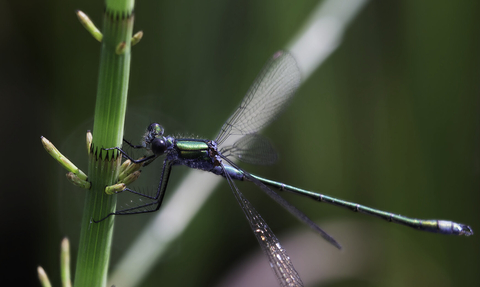
Emerald damselfly (c) Chris Lawrence
Where to see dragonflies and damselflies
Along the edge of ponds, streams and ditches live dragonflies and smaller, dainty damselflies. They fly close to the surface of the water, hunting for flies, midges and mosquitoes. Damselflies come in vibrant colours of metallic green, blues and reds while dragonflies are larger and more robust,
Titley Pool
Titley Pool in the west of the county is one of the largest natural open areas of water in Herefordshire and a great place to see dragonflies and damselflies. They fly close to the surface of the water, hunting for flies, midges and mosquitoes. The most common species are the common hawker, common blue damselfly and common and ruddy darters. See if you can spot a darter perching on vegetation close to the water’s edge who, as the name suggests, then darts off to catch its prey.
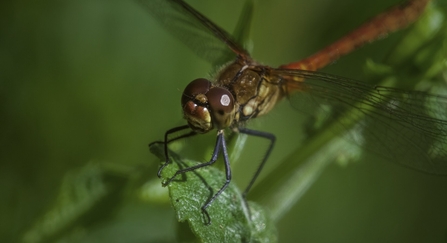
Ruddy Darter (c) Neil Aldridge
The Sturts
Damselflies seen at The Sturts come in vibrant colours of metallic green, blues and reds. Here the permanent ponds amongst the wet meadows are home to four different species of damselflies as well as common and ruddy darter. At Sturts East, there’s the eye-catching common blue damselfly with its black/blue segmented body; the delicate blue-tailed damselfly which is mostly black in colour with a pale blue band towards the end of the body; and the metallic green of the emerald damselfly.
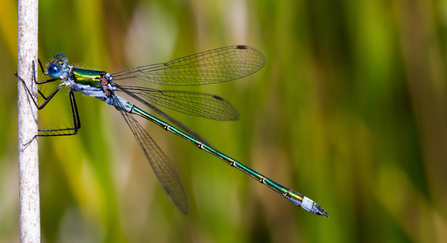
Emerald damselfly (c) Mike Snelle
Bodenham Lake
The lake at Bodenham is a great site for dragonflies and damsels in the summer. Perhaps the most attractive damsel is the appropriately named beautiful demoiselle with a fluttering, butterfly-like flight. The male has a metallic blue body with dark wings and the female a metallic green-bronze body with translucent pale brown wings. Also seen here is the brown hawker, a large, distinctive, brown-winged dragonfly with a distinctive flight of long glides and bursts of rapid wingbeats.
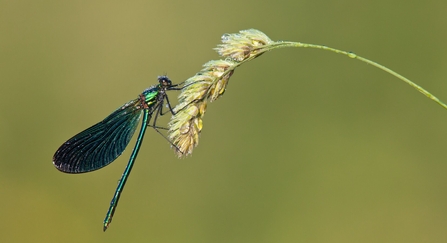
Beautiful demoiselle (Calopteryx virgo), River Char, Charmouth, Dorset, England, UK - Guy Edwardes/2020VISION
Parky Meadow
The mixture of marsh and wet grassland of this nature reserve near Wigmore provide ideal conditions for damselflies and darter dragonflies such as the common and ruddy darter. The common darter is a small, narrow-bodied dragonfly that is typically on the wing from July to October. Males are bright red, while the females and immature adults are golden-brown. The colouration is similar to the ruddy darter which by comparison is slightly smaller and the abdomen has a club-shaped tip.
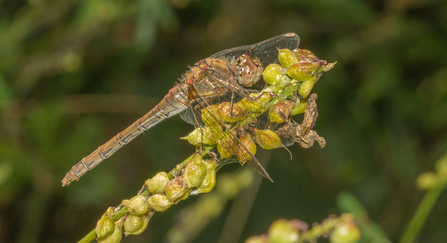
Common darter (c) Janet Packham
Lugg Meadow
During mid-summer large populations of the spectacular banded demoiselle are seen flittering along the banks of the river at Lugg Meadow. The males are metallic blue, with a distinctive dark band across their wings (not to be confused with the beautiful demoiselle which has an entirely dark wing), and the females are a shiny green. During the breeding season, males court any visiting female by doing a special display flight for her.
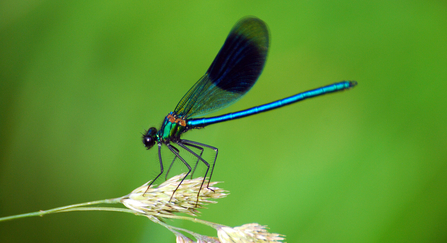
Banded demoiselle (c) Zsuzsanna Bird
